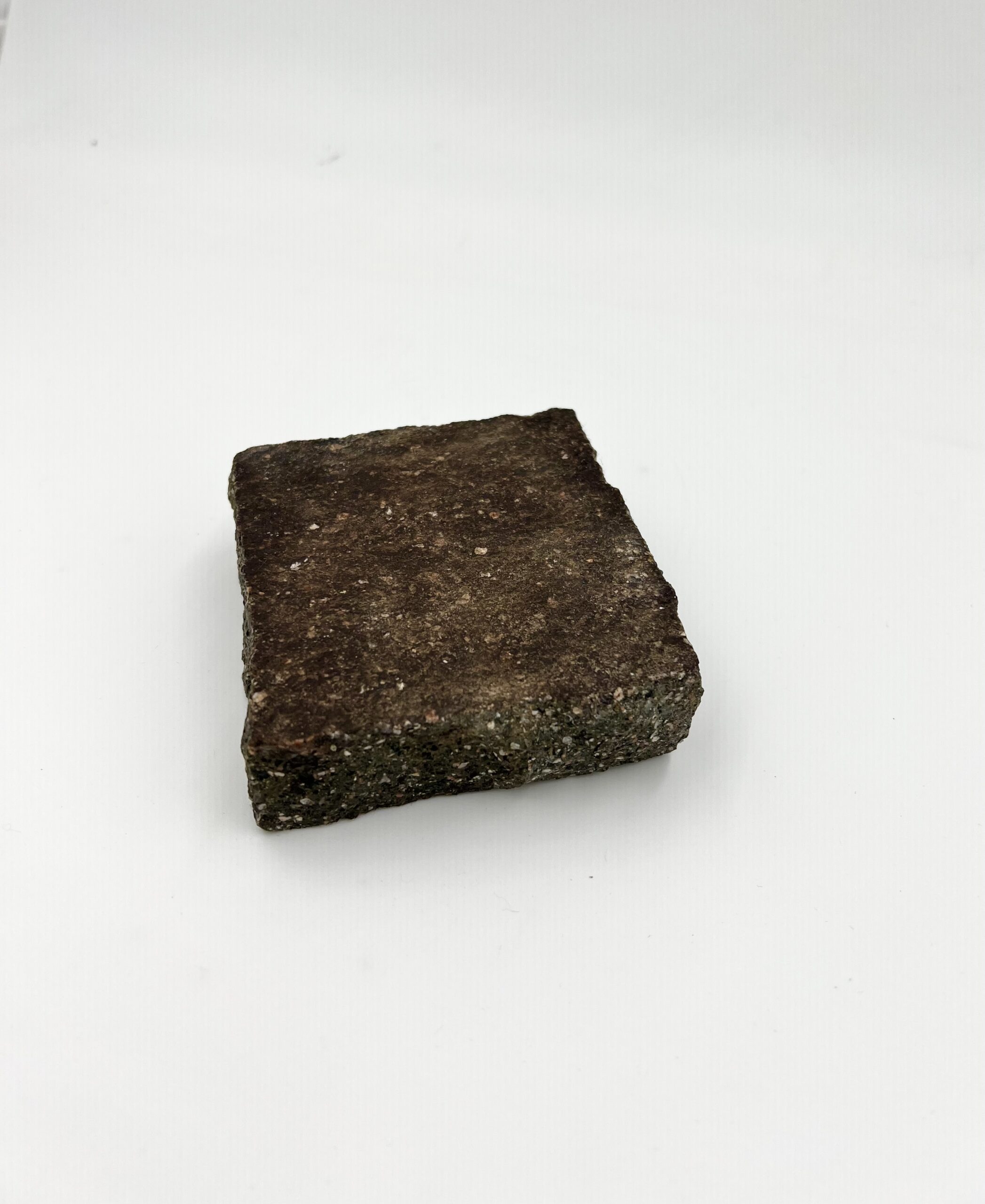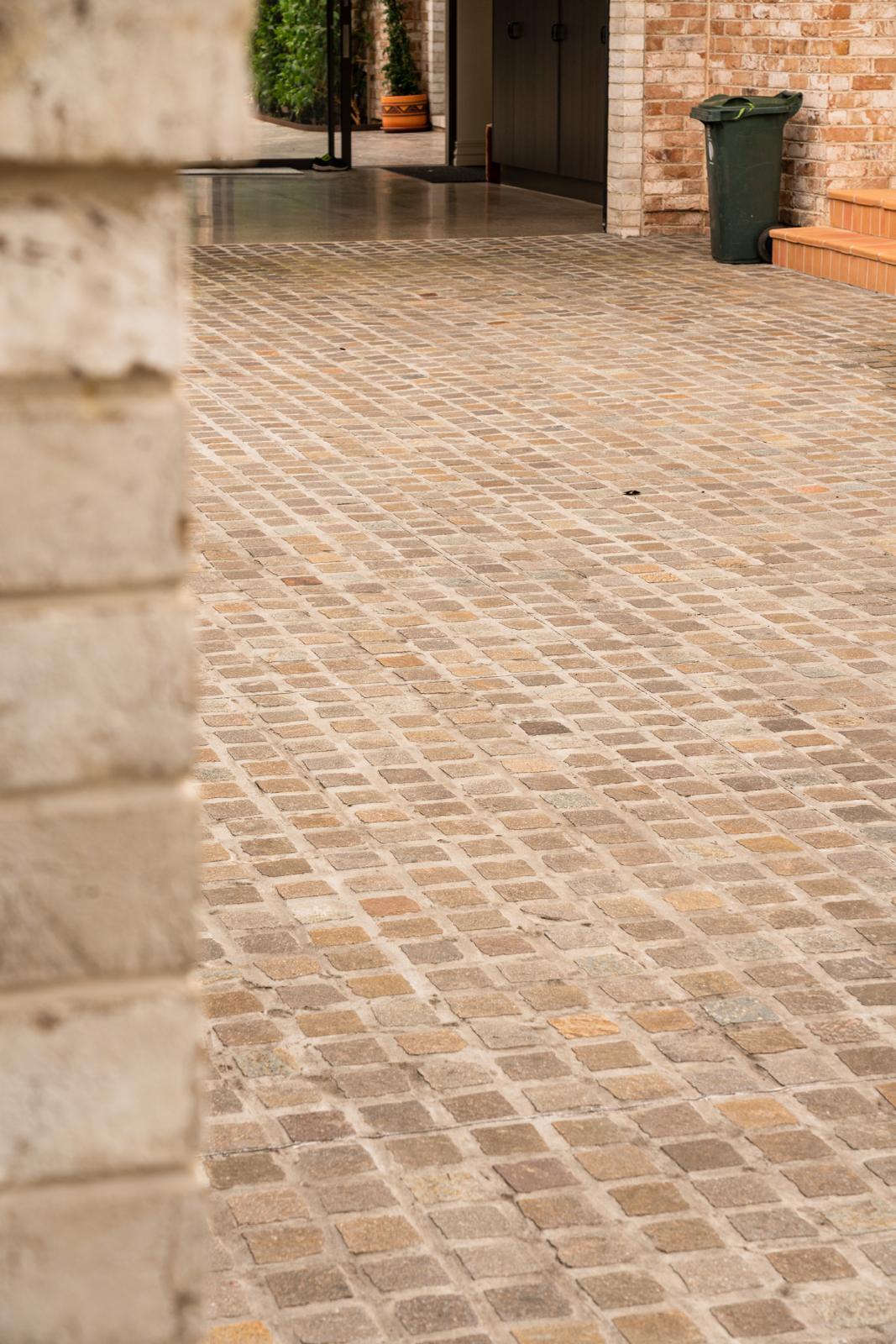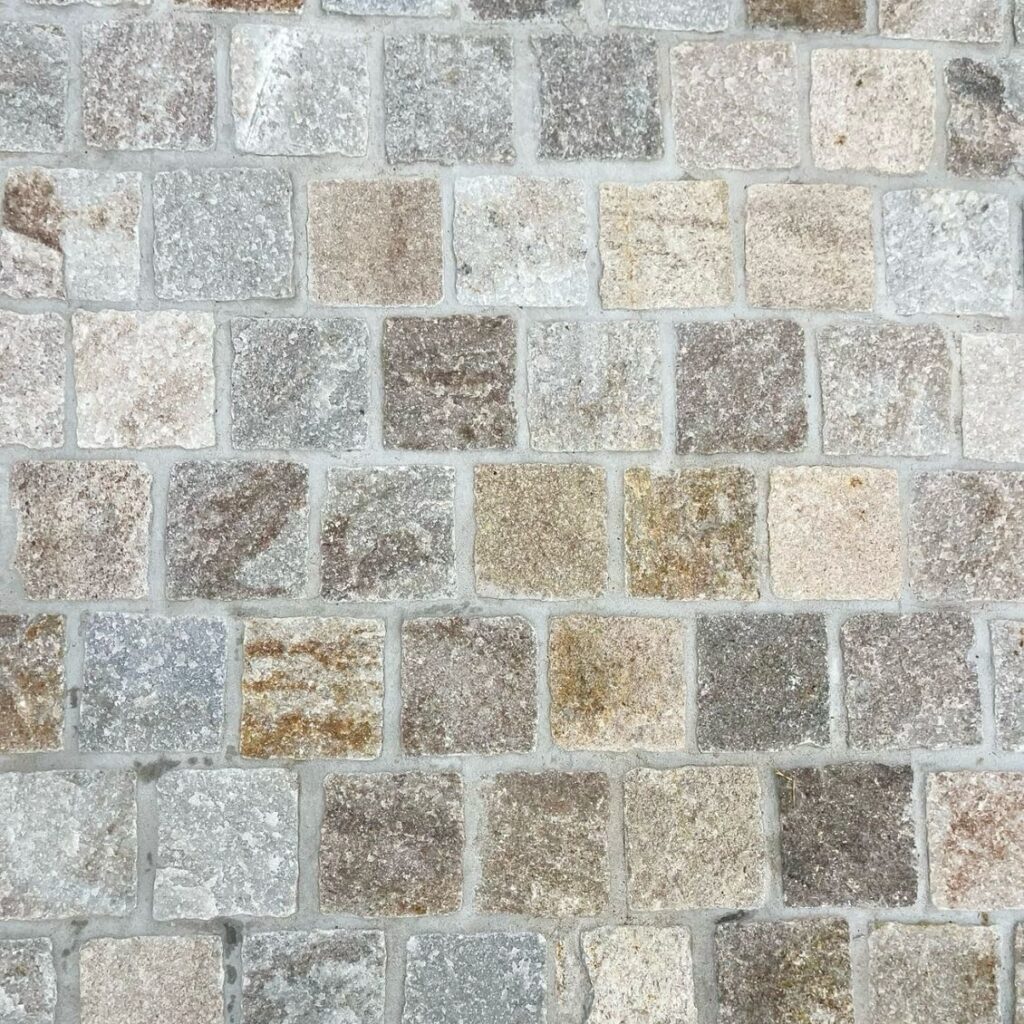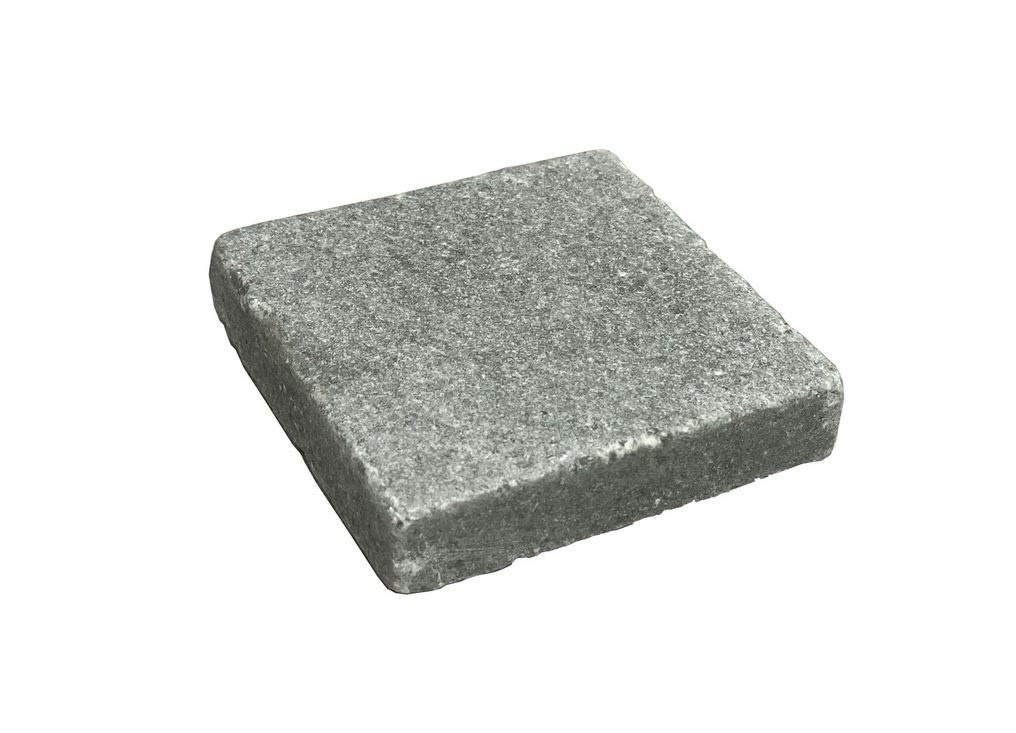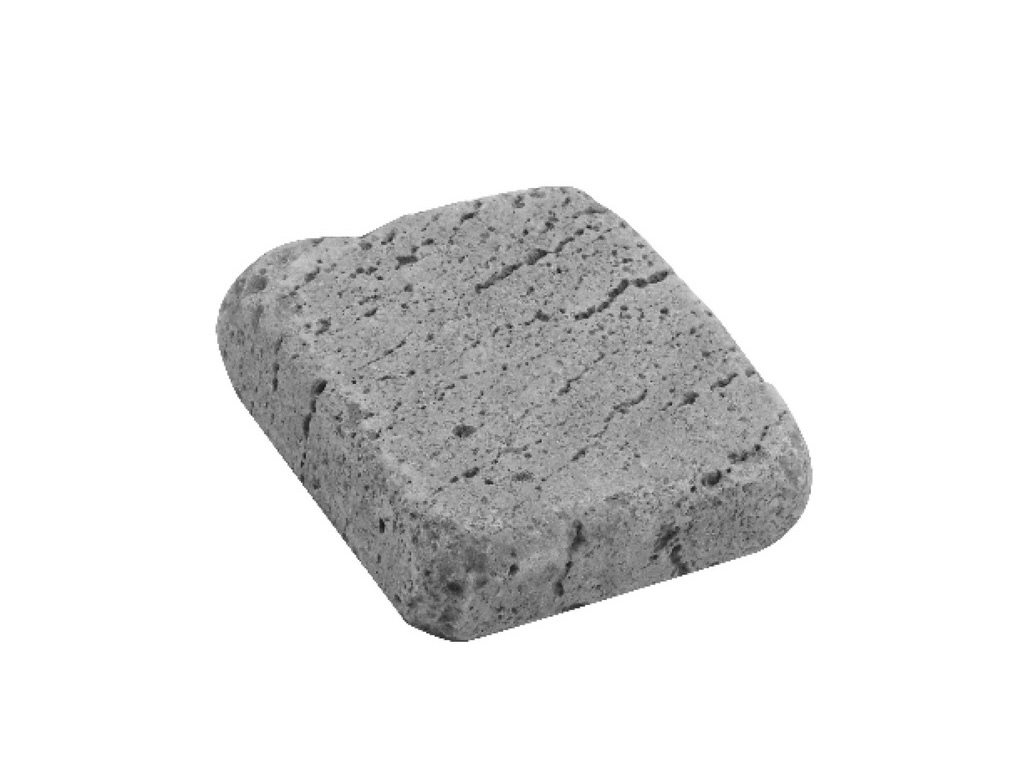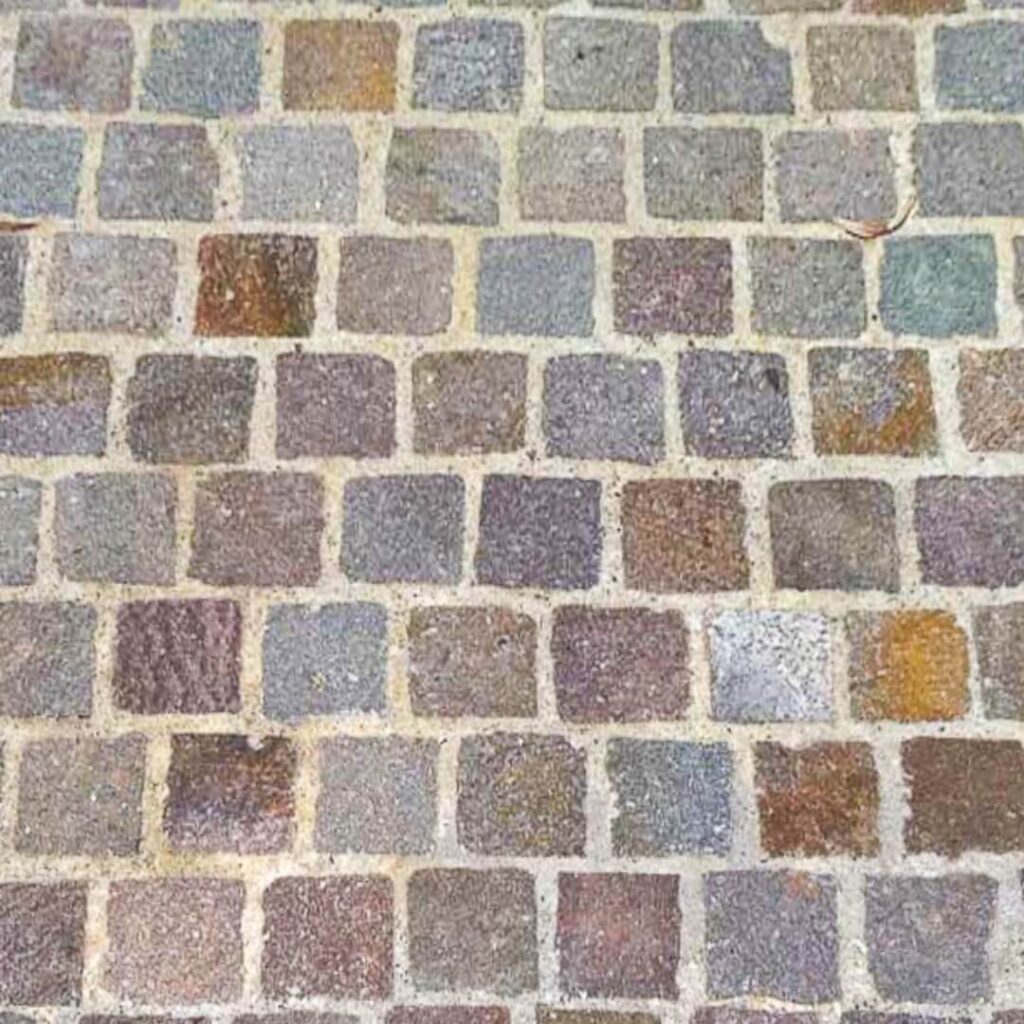Porphyry – CobbleStone
Regarding outdoor paving, Porphyry offers the perfect blend of rugged durability and sophisticated beauty. Known for its unique texture and rich, earthy tones, this stone creates a striking foundation for any landscape.
Whether used for driveways, walkways, patios, or pool decks, Porphyry pavers are built to last, enhancing the aesthetic appeal of your outdoor space while standing up to the elements.
Transform your surroundings with the enduring charm and strength of Porphyry.
Key Features
Porphyry has several outstanding features, making it a highly sought-after material for various projects. Each of these attributes contributes to both the practical and aesthetic value of this natural stone:
- Natural Earthy Tones: Porphyry displays a range of earthy hues, including deep reds, purples, and browns, which add warmth and character to any space.
- Natural Split Finish: The split finish creates a rugged, uneven surface that brings out the stone’s raw beauty, making it ideal for rustic or natural designs.
- Durability: Porphyry is known for its incredible strength and resistance to wear, making it perfect for high-traffic indoor and outdoor areas.
- Versatile Size: Measuring 100 x 100 x 20-40 mm, the varying thickness allows flexibility in application, from paving to cladding.
- Weather Resistant: This stone is highly resistant to extreme weather conditions, making it ideal for outdoor use where it will be exposed to rain, snow, or heat.
- Longevity: Porphyry’s natural hardness ensures that it will last for decades without losing its appearance or functionality, offering long-term value for your investment.
Ideal Use Cases and Application
Porphyry is a versatile stone that can be used across different settings. Below are some of the most common and practical applications for this material:
- Outdoor Pathways and Driveways: The natural split finish makes Porphyry an excellent choice for outdoor paths and driveways, providing both functionality and rustic charm.
- Patios and Courtyards: Porphyry’s weather resistance and durability make it a great material for outdoor living spaces like patios or courtyards, where it adds a natural, earthy feel.
- Building Facades and Cladding: Due to its unique appearance, Porphyry is often used for cladding and architectural facades, adding a bold and textured look to buildings.
- Public Spaces: Porphyry’s ability to withstand heavy foot traffic makes it ideal for use in public plazas, walkways, and town squares, where both aesthetics and functionality are crucial.
- Garden Landscaping: This stone works beautifully in garden paths, terraces, and around water features, blending seamlessly into natural landscapes while offering durability.
- Interior Accent Walls: Porphyry can be used on accent walls to create a striking feature indoors, creating a rugged yet elegant focal point in living rooms, foyers, or kitchens.
Considerations for Using Porphyry
When deciding to use Porphyry in your project, it’s important to consider several factors to ensure it fits your design and functional needs. Below are the key considerations:
- Surface Texture: The natural split finish provides an uneven texture, ideal for outdoor use but may not suit interior spaces that require a smoother surface.
- Colour Variation: Porphyry’s rich, earthy tones vary between pieces, which can add character but may require careful planning for consistency in larger projects.
- Installation Complexity: Varying thickness (20-40 mm) makes installation more complex, requiring professional help to ensure a smooth, even surface.
- Weight and Structural Load: Due to its heavy weight, Porphyry requires a strong structure to support installations on walls or raised platforms.
- Weather and Environmental Exposure: Porphyry is ideal for extreme weather, but proper drainage is crucial to prevent long-term damage from water accumulation or freezing.
- Cost and Budget: Porphyry can be costly as a premium material. Consider not only the stone price but also installation, sealing, and maintenance costs.
- Maintenance Needs: While durable, Porphyry requires occasional maintenance like cleaning and sealing, especially in high-traffic or outdoor areas.
Care and Maintenance
To ensure the longevity and beauty of Porphyry, proper care and maintenance are essential.
Below are seven key maintenance tips to keep your Porphyry surfaces looking their best:
- Regular Sweeping: Keep your Porphyry surface clean by sweeping regularly to remove dirt and debris. This prevents small particles from scratching or wearing down the stone over time.
- Gentle Cleaning Solutions: Use mild, pH-neutral cleaning solutions specifically designed for natural stone. Avoid harsh chemicals or acidic cleaners that can damage the surface and affect its natural finish.
- Seal the Surface: Seal your Porphyry pavers once or twice a year to protect them from stains and moisture, especially in outdoor or high-traffic areas. This is particularly important in regions with heavy rainfall or freezing temperatures.
- Immediate Spill Clean-Up: Clean up spills immediately to avoid stains. Substances like oil, wine, or acidic liquids can penetrate the stone if left unattended.
- Avoid Abrasive Tools: Use soft brushes or cloths rather than abrasive cleaning tools or scrubbers to preserve the stone’s natural split finish.
- Check for Chips and Cracks: Regularly inspect the surface for chips or cracks, particularly in high-traffic areas. Repair any damage promptly to prevent further issues.
- Pressure Washing for Outdoor Use: Use a low-pressure washer to clean the surface without damaging the stone’s natural texture for outdoor installations. After washing, reseal the stone to maintain its protective layer.

